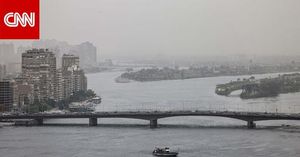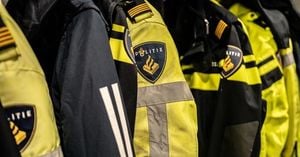The Burj Khalifa stunt in Mission: Impossible – Protocollo fantasma stands as a defining moment for the franchise, showcasing Tom Cruise's commitment to performing his own dangerous stunts. The question on many minds is whether Cruise really climbed the iconic skyscraper. The answer is a resounding yes. As part of his growing list of perilous feats, scaling the exterior of the Burj Khalifa in the fourth installment of the Mission: Impossible series remains one of Cruise's most renowned acts of bravery.
Mission: Impossible – Protocollo fantasma follows Ethan Hunt, portrayed by Cruise, as he ventures to Dubai in pursuit of nuclear launch codes after the villain Kurt Hendricks, also known as Cobalt (played by Michael Nyquist), steals a devastating weapon. The plot thickens as Hunt must ascend to the 130th floor of the 829.81-meter tall skyscraper, opting for a pair of questionable suction gloves instead of the elevator.
The climb of 123 floors is only the beginning; Hunt then makes a daring leap from the building, showcasing not just the physicality required but also the meticulous planning behind the scenes. The preparation for this stunt was extensive. Cruise had to wear a harness that was carefully secured to strategic points on the building, which required the production team to obtain special permits to drill into the floors and walls, resulting in the breaking of 35 windows.
Director Brad Bird consulted with various professionals, including engineers, rock climbers, and stunt coordinators, to ensure the safety of the shoot. Despite considering a stunt double, Cruise insisted on performing the stunt himself, a hallmark of his career. However, the harness was so tight that it restricted circulation, necessitating that the shots be completed as quickly as possible to prevent discomfort for Cruise.
The filming also involved helicopters that were limited to 30-minute flights, adding to the urgency of capturing each shot accurately. The sequence was filmed in IMAX, which meant that the cameras consumed film rapidly, requiring the footage to be flown back to Los Angeles for development. Bird could not confirm the quality of the shots until the film was developed, adding a layer of tension to the process.
Training for the Burj Khalifa stunt was equally rigorous. The crew constructed a glass wall to simulate the building's exterior, allowing Cruise to practice climbing up and down while acclimating to the harness's discomfort and the physical demands of the stunt. They even used artificial lights to mimic the heat from the Burj Khalifa's windows.
Despite the logistical nightmares, the planning proved effective. The Burj Khalifa stunt is often cited as the pinnacle of Cruise's stunt work in the Mission: Impossible series. It is not only thrilling for the audience but also a testament to Cruise's dedication to his craft. This sequence stands out as the most exhilarating moment in Mission: Impossible – Protocollo fantasma, showcasing the extreme danger and physical toll it took on Cruise.
While Cruise has executed numerous dangerous stunts throughout his career, including hanging from an airplane during takeoff and holding his breath underwater for six minutes, the Burj Khalifa climb remains a standout. The motorcycle jump in Mission: Impossible – Dead Reckoning has been described as his most dangerous stunt to date, with the unpredictability of landing making it particularly perilous.
The upcoming Mission: Impossible – The Final Reckoning, set to release on May 22, 2025, promises to feature Cruise's two most hazardous stunts yet. One involves an underwater sequence where Cruise aims to reclaim the breath-holding record from Kate Winslet, and another features an airplane stunt where the aircraft is already airborne.
Reflecting on the Burj Khalifa stunt, it’s clear that its impact resonates more than a decade later. The sequence is thrilling to watch and adds excitement to the film's narrative, but it also leaves audiences curious about the behind-the-scenes efforts that made it possible. Cruise himself noted in a documentary that this stunt represented the culmination of his years of experience: "In all the years I've done stunts and made films, it took all this knowledge to realize not only what I did, but also what we all did with the Burj."
Stunt coordinator Gregg Smrz recalled a particularly nerve-wracking moment during filming when Hunt's equipment malfunctioned, causing him to plummet from the building. This moment was executed in a single take, which Smrz described as "the most exciting day of filming." He recalled a conversation where someone questioned, "What if the cable breaks?" to which he firmly responded, "That's not an option." The careful planning and execution ensured that the stunt was not only thrilling but also safe.
Even fellow actors were in awe of the operation. Matt Damon recounted a dinner with Cruise where he shared insights about the stunt's development. "He told me, 'I've thought about this shot for 15 years!'" Damon expressed amazement at Cruise's commitment, noting that a safety officer initially deemed the stunt too dangerous, leading Cruise to find a new safety officer willing to support his vision.
Tom Cruise continues to push boundaries, demonstrating that he is willing to risk it all to deliver unforgettable experiences for audiences. The Burj Khalifa stunt exemplifies not just his bravery but his relentless pursuit of cinematic excellence, ensuring that Mission: Impossible remains a benchmark for action films.




